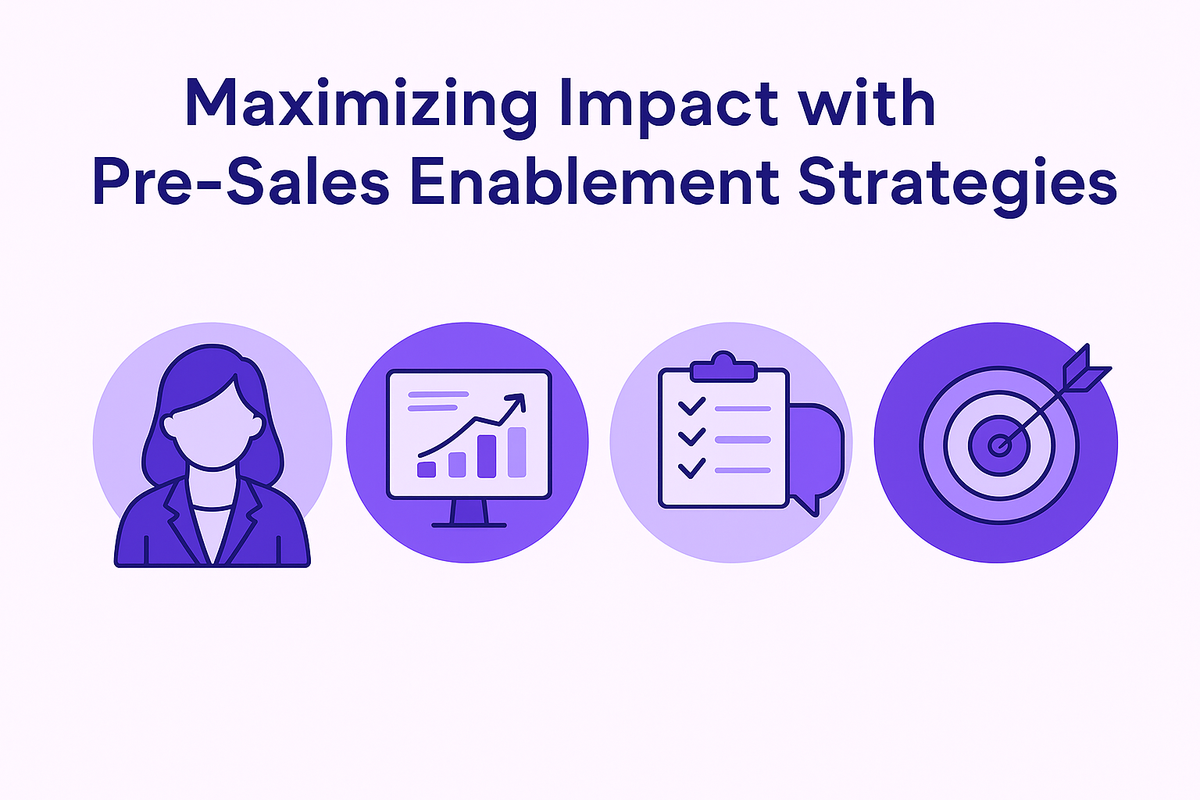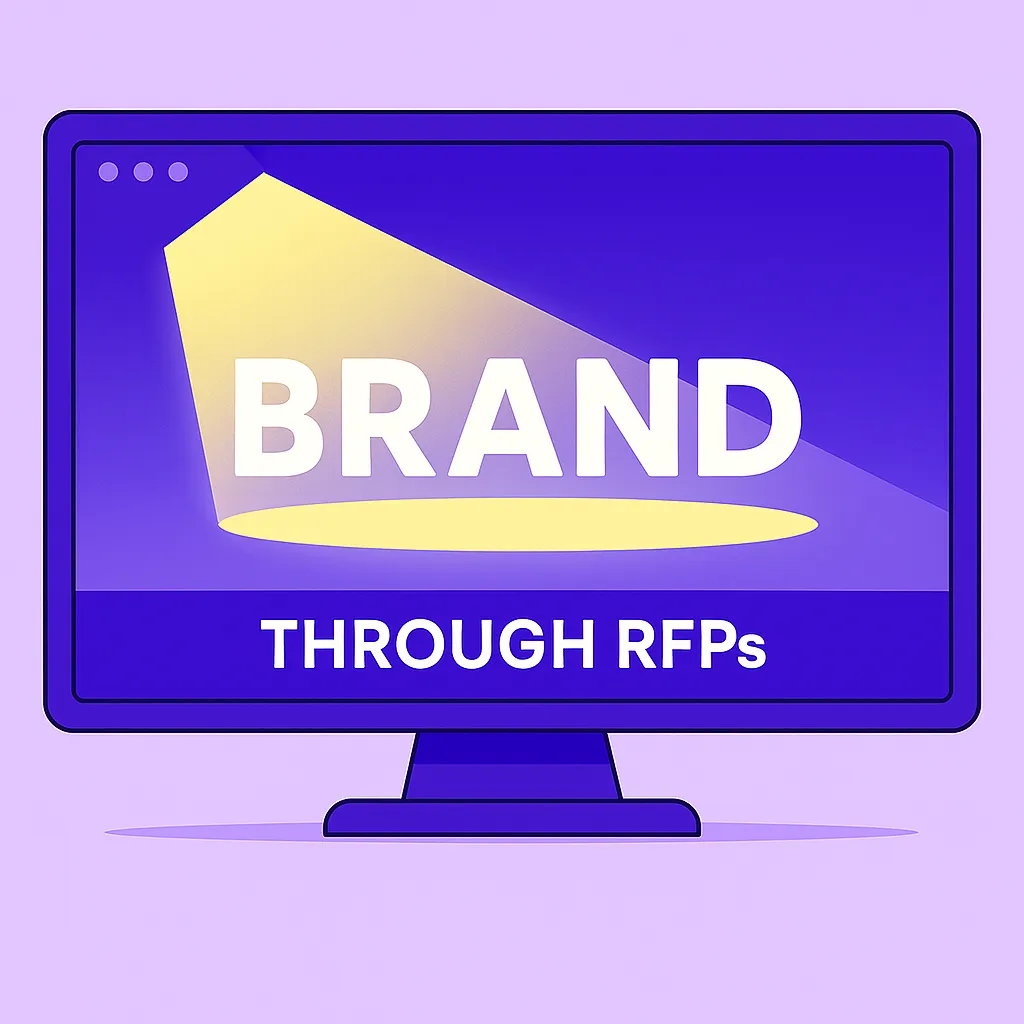What is Presales Enablement? A Complete Guide
July 29, 2025
By
Evie Secilmis

How to Optimize Your RFP Process for Faster, Higher-Quality Responses
Optimizing your RFP process can dramatically cut cycle times, reduce team effort, and lift win rates. By standardizing workflows, leveraging automation, and aligning teams, you’ll submit stronger proposals—faster.
New to RFPs? Start with the fundamentals in Request for Proposal (RFP) 101.
What the RFP Process Involves (and Why It Matters)
An RFP (Request for Proposal) is a formal request for vendors to propose solutions against defined requirements and evaluation criteria. Responding effectively requires structured intake, data gathering, drafting, review, and on-time submission.
RFPs aren’t just administrative exercises—they’re growth levers. When done right, they translate buyer requirements into clear, tailored proposals that win business.
Learn how upstream sales work shapes better outcomes in Preliminary Sales.
The Typical RFP Response Lifecycle
A streamlined RFP process helps teams stay consistent, reduce rework, and meet deadlines. Most follow these key stages:
1. Initial Assessment
- Fit check and qualification
- Scope, timeline, and stakeholder mapping
2. Collaborative Drafting
- Sales, SMEs, security, and legal contribute content
- Version control ensures accuracy and alignment
3. Reviews & Approvals
- Validation for accuracy, compliance, pricing, and branding
4. Submission
- Ensure correct format, portal readiness, and deadline management
Identify bottlenecks in each stage to uncover measurable performance improvements and shorten turnaround times.
Common Challenges (and How to Fix Them)
Time-Consuming → Use templates, content libraries, and AI-assisted drafting.
Resource-Intensive → Centralize collaboration and streamline approvals.
Complexity → Standardize the core while customizing the edge.
See how top-performing teams remove friction with AI in How to Streamline Proposal Responses with AI.
Build a Reusable RFP Response Template
Creating a master RFP response template helps your team customize only 10–30% of each submission while keeping the rest standardized.
A strong template typically includes:
- Introduction – Brief overview and client context
- Executive Summary – Outcomes and why you’re the best fit
- Detailed Response – Requirement-by-requirement answers
- Case Studies – Industry-relevant proof points
- Conclusion & Next Steps – Clear CTA or follow-up
Lift your win rates further with insights from Maximizing Your RFP Win Rate.
Leverage RFP Automation & AI Tools
Modern RFP automation software like Iris helps teams accelerate responses without sacrificing quality.
Here’s how automation delivers value:
- Content Libraries – Store approved, versioned answers for reuse
- AI Answer Suggestions – Auto-draft responses from past content
- Collaboration & Approvals – Assign roles, manage reviews, and track progress
- Analytics Dashboards – Measure cycle time, bottlenecks, and win-rate trends
Security reviews slowing you down? Pair RFP automation with Security Questionnaire Automation to fast-track DDQs and compliance forms.
Assemble a Cross-Functional RFP Team
A winning RFP process is built on collaboration. Bring together:
- Sales – Context, strategy, and relationship insight
- Technical SMEs – Architecture, integrations, and solution design
- Legal & Compliance – Terms, data protection, and risk management
- Project Manager – Deadlines, milestones, and quality control
Explore vertical playbooks in RFP Automation for SaaS and RFP Automation for Healthcare.
Best Practices for Stand-Out Proposals
To make every proposal more persuasive:
- Be Clear & Concise – Avoid jargon and keep responses easy to scan
- Lead with Benefits – Tie features to outcomes
- Use Visuals – Charts or infographics improve readability
- Proofread & Update Stats – Ensure accuracy and freshness
Enhance content quality using AI for Proposal Writing.
Operationalize Timelines, Roles & Tools
Define a structured workflow:
Intake → Draft → Review → Final → Submit
Assign owners for each step and track progress in real-time. Use outcome metrics from Why You Need AI Proposal Management Software to measure impact and efficiency.
Adopt a Continuous-Improvement Loop
Strong teams don’t stop at submission—they refine continuously.
- Conduct post-mortems after each major proposal
- Gather win/loss feedback to identify content gaps
- Refresh collateral quarterly for relevance and accuracy
Keep your compliance materials current using Security Questionnaire Automation.
The Payoff of an Optimized RFP Process
Teams that invest in optimization see:
- Faster response cycles
- Higher proposal quality
- Increased win rates
Ready to remove repetitive work and focus on strategy? Explore workflows in How to Streamline Proposal Responses with AI.
Related Reading
- What Is a Request for Proposal (RFP)?
- RFP Automation: The Modern Approach
Share this post
Link copied!




















